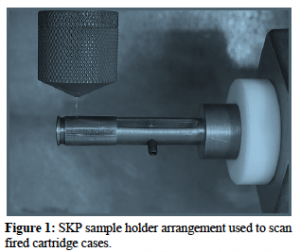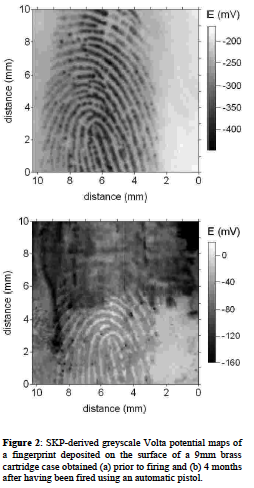An interesting application of fingerprinting to brass shell casings has developed in the last decade whereby a person’s latent fingerprints may be developed even after discharge or even after being whipped down. This is due to the acid in our sweat secretions and the corrosion of the metal.
The technology and the method exists, but is not used in the field.
FINGERPRINTS ON BRASS
A latent fingerprint will be left behind due to the sweat secretion deposited from an individual’s finger. This print will leave an impression of the papillary ridge pattern of the finger and can be left on cartridge cases. This print will then cause a slight corrosion of the metal, usually brass, and with the right equipment, the print can be lifted in order to identify who the print belongs to potentially [Blogger’s note: please see our earlier blog concerning fingerprint identification as a forensic science discipline that exposes the limitation of the modern practice].
In order to lift the print an electronic charge must first be applied to the cartridge and then a powder with spherical beads is spread across the area where the fingerprint is located. This involves a Scanning Kelvin Probe (SKP) technique. This powder will adhere to the natural oils left on the cartridge due to the human contact which makes it possible to identify the owner of the fingerprint. Even after a firing and washing of a brass cartridge an individual will still be able to visualize the fingerprints left behind.
Source: “Human Fingerprint – Metal Interactions Studied using a Scanning Kelvin Probe” Geraint Williams and H. Neil McMurray, Materials Research Centre School of Engineering University of Wales Swansea




